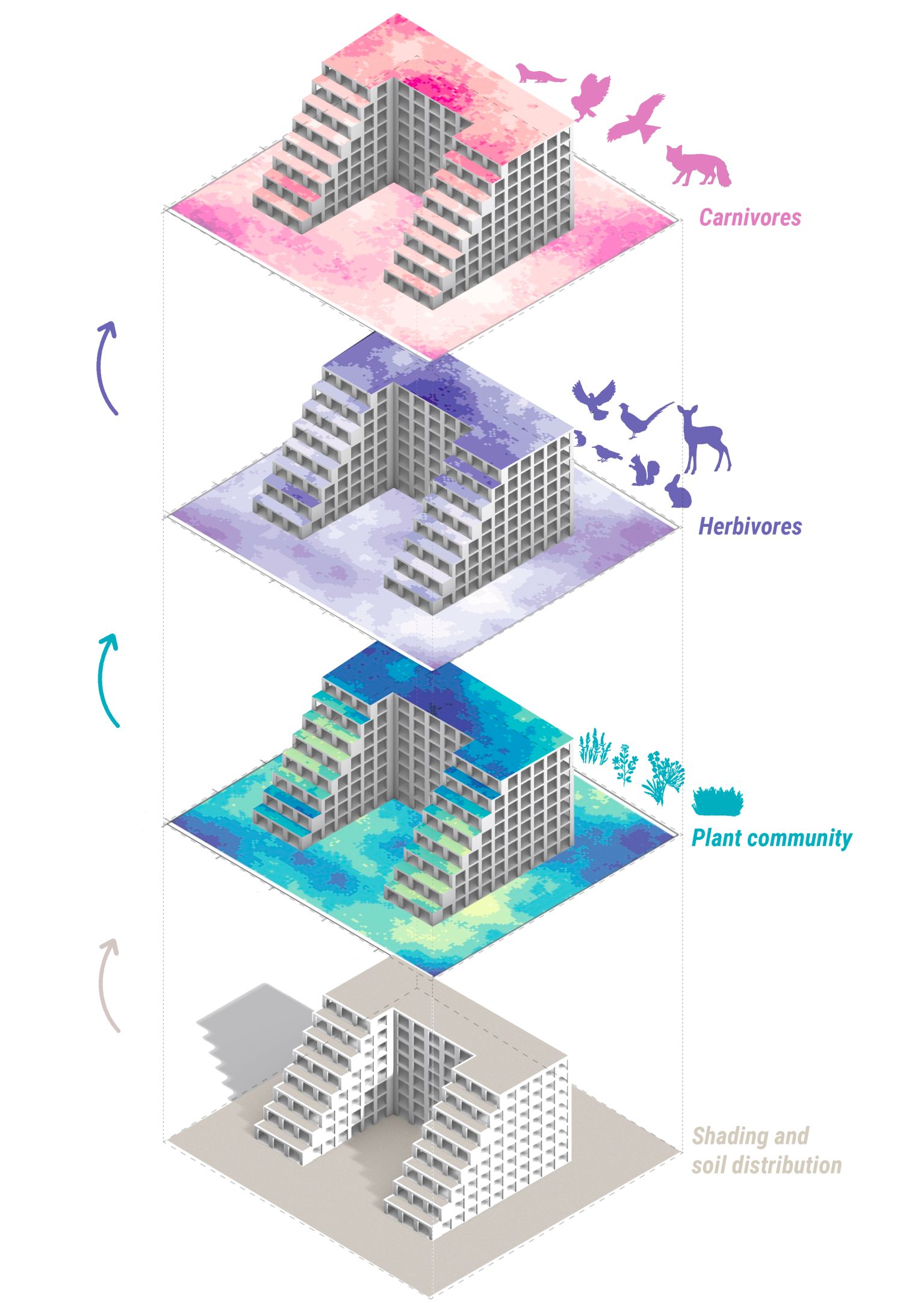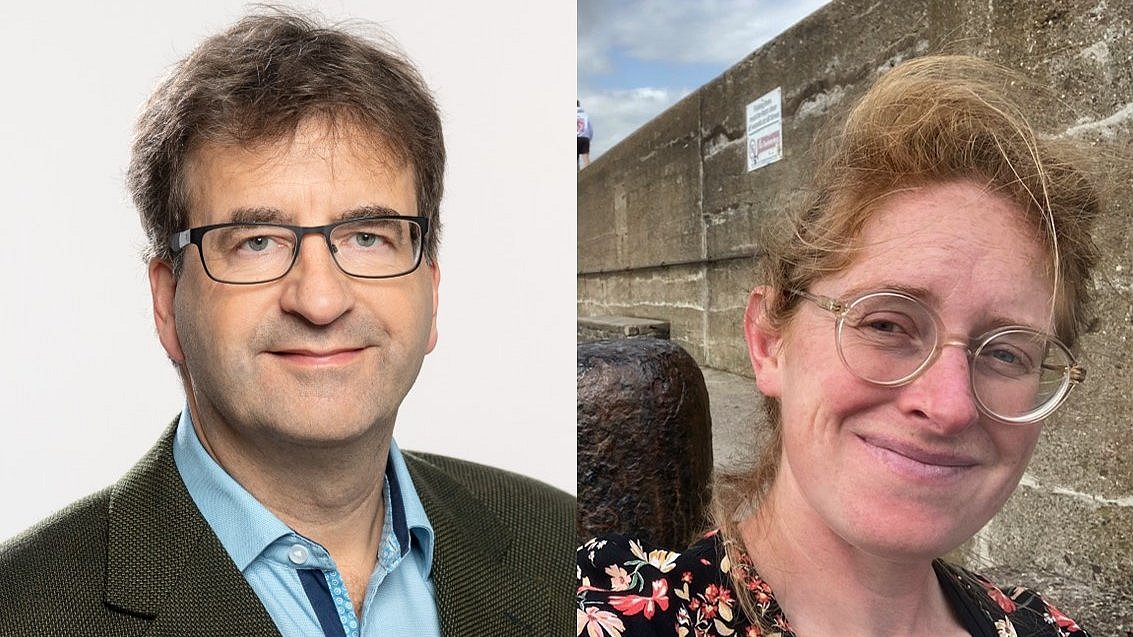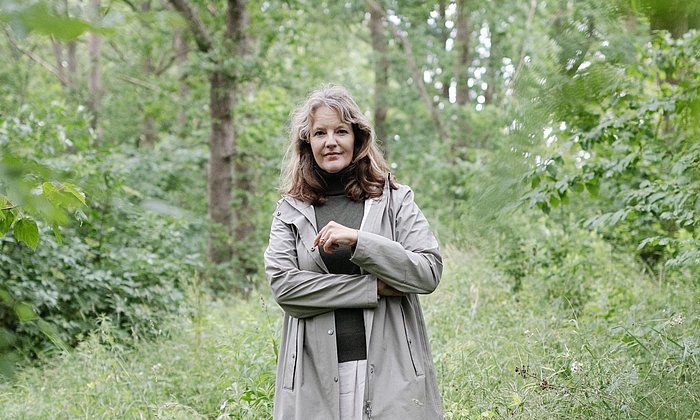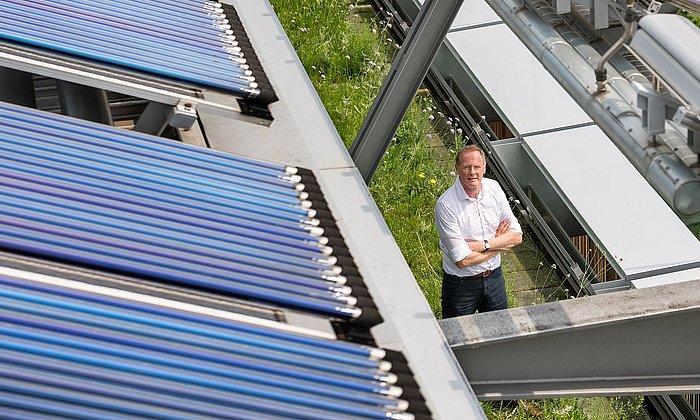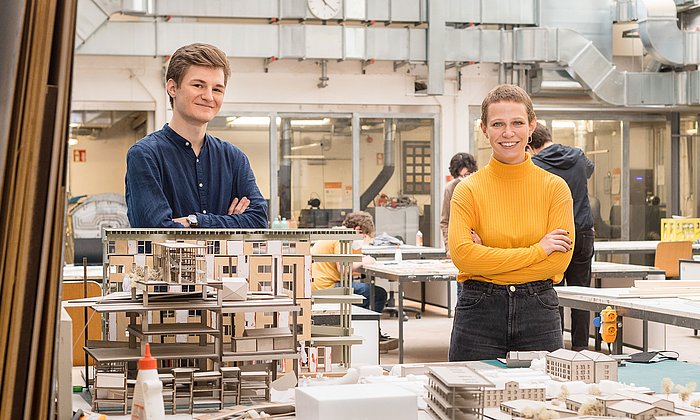Software tool integrates the needs of animals and plants in building plans
Computer-aided design of green building envelopes
The urban realm is growing. Many people who live in these areas would like to see their cities become green, biodiverse and highly livable spaces. Yet, animals, plants and microorganisms can only flourish where species-appropriate habitats are available and their needs are taken into consideration. In the ECOlogical building enveLOPES (ECOLOPES) project, Wolfgang Weisser, professor of terrestrial ecology at TUM, is working with international partners to develop a tool for designing building envelopes that are more in touch with nature and take account of other organisms. The project team comprises researchers from TUM, the Vienna University of Technology, the University of Genoa, and the Technion - Israel Institute of Technology, as well as two industry partners.
Developing a new plug-in
“We want to make the knowledge of biologists and ecologists available to architects and urban designers – and in a way that aligns with their working methods,” says Weisser. His team is therefore developing an ecological model that can be used in architectural software solutions already used for computer-assisted planning of building envelopes and façades. Architects have harnessed this software to date to calculate thermal losses and the need for air-conditioning systems.
In the future, this model will allow architects to access data on animals, plants and microorganisms that could call these envelopes home. This includes information about hiding places, nesting methods and sources of sustenance, as well as their ability to coexist with other organisms. This tool is based on a methodology called Animal-Aided Design, which aims to promote the protection and integration of wild animals in urban design and development.
A sound base of scientific data
“At the moment, building designs place a strong emphasis on aesthetic considerations. Nature is, to some extent, the ‘glitter’ on the architectural design. Our vision is to make nature an equivalent part of planning – based on well-grounded knowledge,” says Viky Culshaw, a postdoctoral researcher and mathematician from Scotland, who has been involved in the animal-based part of the project right from the beginning in 2021.
To provide this in-depth knowledge, researchers must feed the plugin with a large number of data sets. For this, the ECOLOPES team screens scientific publications about ecological niches and food preferences, collaborates with other institutions to create their own research data, and uses databases about, for example, animal migration.
First prototype expected in early 2025
Based on this huge set of data from different sources, the computer software will use realistic mathematical models to show how the microbes in the soil, plants and animals may live in the green building envelopes. Culshaw works with other members in her team to verify these mathematical models and optimize them by adjusting individual parameters. The models might then answer questions like: Which plants are growing on a special kind of soil on a rooftop? How does shadow and light influence growth? Which herbivorous animals eat these plants and are likely use the building as habitat? Which other animals might predate on them? “These models enable us to envision stable ecological systems with low maintenance requirements – a win-win situation for green nature and its inhabitants,” Culshaw explains.
The researchers hope to make an initial prototype available next year. They are already running smaller projects in which data sets are used for planning real building envelopes. Together with their partners from industry and science, Weisser and his team hope to drive the project forward from there – founding a dedicated graduate program, securing additional financing and launching spin-offs are all on the ECOLOPES team’s agenda.
Co-creative project and citizen engagement
Gaining acceptance from the building’s occupants and other local residents is a priority for the researchers. This is why Weisser’s team is also involved in the “NEBourhoods” project in the Munich district of Neuperlach, in which local residents are contributing to the design plans. This project features a co-creative process that introduces local residents to different residential, energy and urban development concepts and invites them to share their opinions and ideas—and also incorporates input from the ECOLOPES project. In a variety of interdisciplinary teams, researchers and residents simulate different ideas, develop concepts and engage with people who might – one day – live alongside a host of animals and plants in modern green buildings.
The article was already published on the website "Research in Bavaria" of the Bavarian State Ministry of Science and Arts: https://www.research-in-bavaria.de/green-envelopes/
Technical University of Munich
Corporate Communications Center
- Dr. Vera Spaett
- vera.spaett@tum.de
- presse@tum.de
- Teamwebsite
